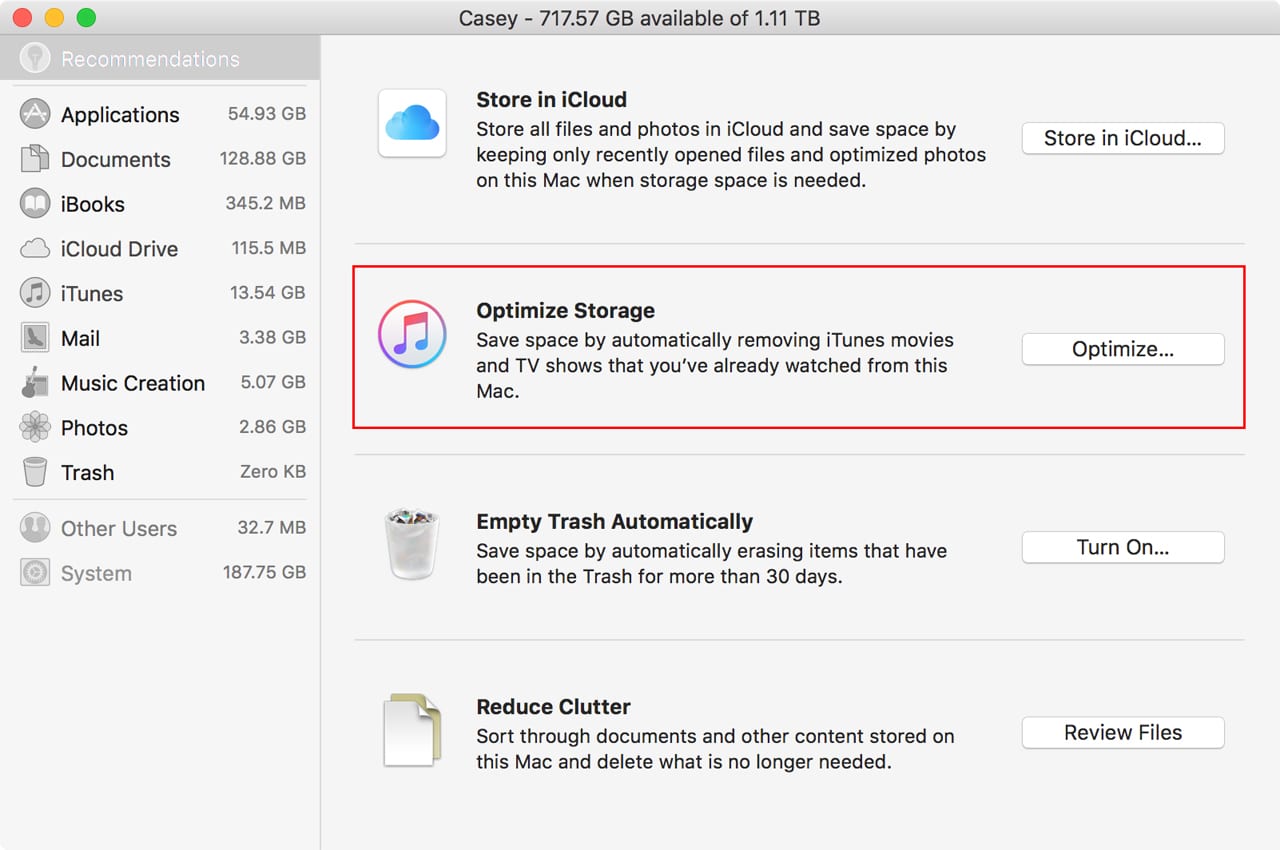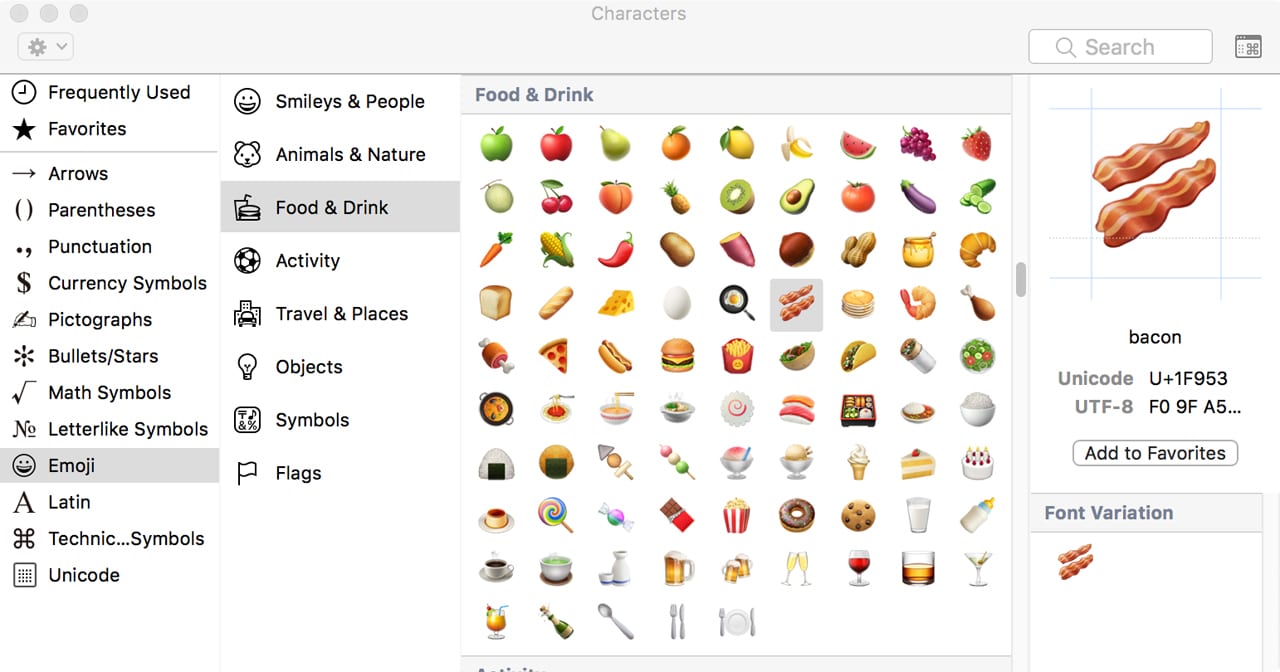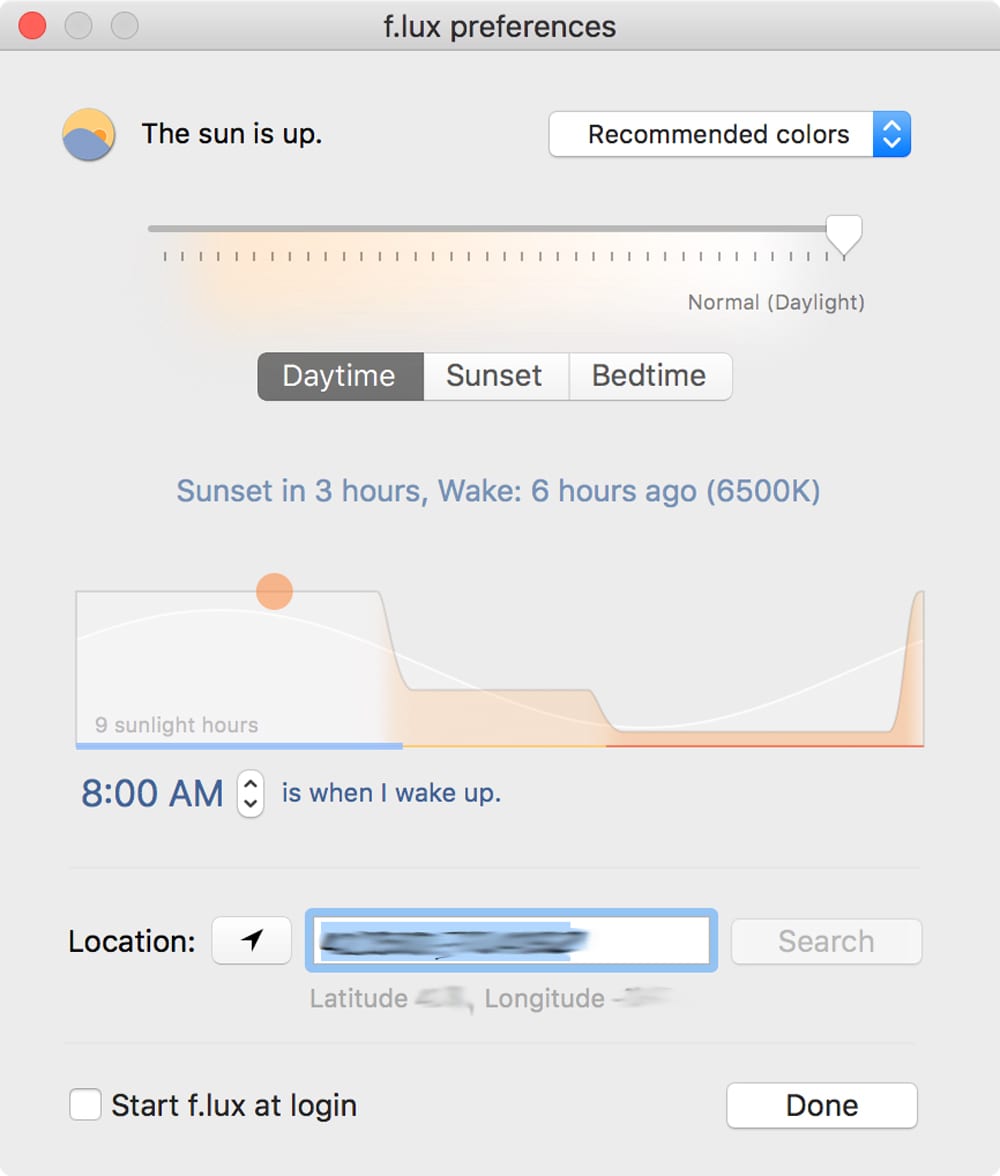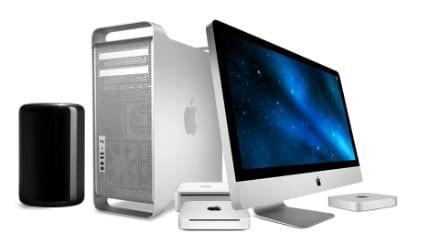![]() The macOS Sierra release on September 20th, 2016 marked a few milestones. It’s the 13th release of the Mac OS, the fourth release of the Mac operating system based on place names (the previous naming convention involved cats), and the first with the new moniker of macOS instead of OS X.
The macOS Sierra release on September 20th, 2016 marked a few milestones. It’s the 13th release of the Mac OS, the fourth release of the Mac operating system based on place names (the previous naming convention involved cats), and the first with the new moniker of macOS instead of OS X.
In the roughly four months since it was released, Sierra has seen three updates that mostly addressed bugs and security fixes. Apple also released a fourth beta of macOS Sierra which, at least in beta form, includes a new feature, an unusual event for Apple, which rarely includes new features between major Mac OS releases (more on the new feature a bit later).
September 20th, 2016
Apple had already released multiple versions of the new macOS Sierra via both the developer preview program and the public beta program. Both beta systems are designed to give users the opportunity to work with a new OS, with the developer version being updated often and a bit more likely to have a few bugs. The public beta version tends to be more stable, but it still has the potential for bugs and crashes.
The first general release of macOS Sierra was meant to be stable, with few if any major bugs. Ah, the best laid plans…
macOS Sierra 10.12.0
macOS Sierra 10.12.0 had its share of issues, but nothing more than is to be expected from a first release. People ran into some general installation problems, including having their Macs freeze up during the install or right after the final restart. Other issues reported involved Time Machine not running and Wi-Fi being slow or failing to connect.
Although these were common issues, they were far from widespread, and most users of the first version of macOS Sierra didn’t encounter any issues. Instead, the many new features were quickly explored and enjoyed, including:
- Siri, which made its first appearance on the Mac some five years after appearing on the iPhone 4s.
- Universal Clipboard, which lets you copy and paste between any of your Apple devices.
- Hands Free, which allows you to use your Apple Watch to unlock your Mac, without having to enter a password.
- Managed Storage and Optimized Storage, which allow you to reduce the amount of storage space needed by moving some data to iCloud storage, as well as helping your local storage stay uncluttered by helping you locate unused and older apps and documents.
- Photos update. Apple continues to add features and make the Photos app easier to use.

macOS Sierra 10.12.1
As expected, the first macOS Sierra update concentrated on fixing issues that were uncovered by the widespread use of macOS Sierra 10.12.0. But it also included a minor feature update to Photos: the addition of a smart album for images taken with the iPhone 7 Plus and the new Depth Effect pictures it’s capable of.
The macOS Sierra10.12.1 update fixed a number of issues with Microsoft Office and Exchange, including a bug in Universal Clipboard that caused text to be pasted strangely, with unusual characters. It also addressed a number of general security issues.
Perhaps the most interesting bug that came to light was a general problem many scanners were having using Apple’s own scanning subsystem. Apple attempted to address this problem with an update targeted directly at Fujitsu’s SnapScan system. While the update helped, the scanning issues would persist for a while longer.

MacBook Pro and Touch Bar
Late October saw the release of new MacBook Pros, including models that included a new Touch Bar supporting multi-touch technology, as well as Touch ID, fingerprint recognition for unlocking the Mac as well as making purchases with Apple Pay, iTunes, the App Store, and the iBook Store. The new MacBooks with Touch Bar shipped with macOS Sierra 10.12.1, while the new 13-inch MacBook Pro without Touch Bar shipped with macOS Sierra 10.12.0.
Although it wasn’t explicitly stated by Apple, macOS 10.12.1 is the minimum requirement for using a Touch Bar and Touch ID on a MacBook Pro.
macOS Sierra 10.12.2
December 13th saw Apple release the second update to macOS Sierra. As usual, Apple listed the update as aiming to improve stability, compatibility, and security. It also included new Emoji icons, including one for bacon, which had me wondering how we could have gone this long without a bacon Emoji.

More seriously, 10.12.2 removed the battery time remaining estimate for battery operated Macs. Mac portables have had a time remaining estimate available for at least 15 years. Apple says it was removed because the time estimate had accuracy problems, though the percent charge in battery is still present.
Added was the ability to include screen shots of the new MacBook Pro Touch Bar, as well as fixes for a number of graphics and bug issues experienced by the new MacBook Pros.
Also seeing updates were the Managed Storage and Optimized Storage feature, Siri, when used with FaceTime and Bluetooth headphones, further bug fixes when using Mail with an Exchange server, and new digital camera RAW support.
Version 10.12.2 may have introduced a new bug involving the Preview app and the editing of PDFs. It seems as if using Preview to edit existing PDFs can lead to corruption of the PDF file. The issue seems to be with Apple rewriting the PDF Kit used in macOS Sierra.
macOS 10.12.3
On January 23rd, 2017, Apple released macOS 10.12.3, with additional fixes for MacBook Pro graphics, specifically, the 15-inch model. The update also addressed a number of PDF issues, fixed a compatibility issue when PDF documents are exported with encryption, and fixed an issue that prevented scanned documents from being searched.
Apple didn’t include a great deal of detail in the 10.12.3 release notes, and it’s too soon to say if all the outstanding PDF issues have been addressed. But it seems Apple is aware of the problems and is working through them.

Looking Beyond Four Months
Although our four-month window has come and gone, it’s always fun to look ahead and anticipate what we’ll be seeing in future releases of macOS Sierra.
The very short term is easier than looking in a crystal ball, since Apple has already released the beta for macOS Sierra 10.12.4. What stands out is a brand new feature being included in the beta, known as Night Shift.
Night Shift appears to be a Mac implementation of the Night Shift feature that was introduced in iOS 9.3. The idea is a simple one; as the day moves into evening, the Mac display decreases the intensity of blue light and increases yellow. This causes the display to change from a cool daylight color to a warmer evening color.
The reason for the color change is to reduce eyestrain and promote a more restful feeling as sleep time approaches.
You don’t have to wait for macOS 10.12.4 to be released to try out Night Shift; the F.lux app has been available for the Mac for a number of years. It provides the same day-to-night display change, and also offers a good deal more customization and versatility than is present in the beta version of Night Shift.
The long-term view for macOS Sierra looks bright, and we’ll likely see most of the current issues corrected, providing for stable operation of your Mac and its peripherals. Of course, this summer will see the annual WWDC, a new version of the macOS announced, and a public beta available sometime in the summer.
And so the cycle begins again.









I’m at Mountain Lion have upgraded my memory from the standard 4GB to 32GB on my 2011 iMac 27″ in hopes of upgrade my MacOS.
iTunes won’t sync with my new 5S iPhone but will sync with my iPad Air.
Is Sierra the right Mac Os to upgrade to to get iTunes to sync with my phone?
I’m also concerned about my Final Cut 7, Logic, Audition. Quicken, Word. Toast apps working with Sierra without having to re-purchase them.
Thanks Bob
Mr Nelson, it is great to have you back! I always enjoyed your about.com work, and then it went away. And now, I guess thanks to macsales.com, you’re back.
Nice article. I’m going to finally break down and install Sierra.
My MacPro is vintage 2008 (with some boosts from OWC goodies). It works well, but it simply can’t live wholly in the new Apple connected world. Please keep your ear to the ground about the possibility of a new Mac Pro coming out.
t
Well after updating Safari to 10.0.3 in the El Capitan system the sys.prefs lost it’s ability for me to enter my Apple ID.
The dialog box keeps popping up to enter my Apple ID. After I do it then it says that I am already signed in. I can’t sign out and I have no contacts or calendar. I can sign in at icloud.com and it all works- except locally on the computer.(Mac Air 2015)
I started an apple case about this and it’s been a week and they have not gotten back to me for a fix. I have a senior adviser working on it. I did a fresh install of 10.11.6 to no avail.
I know I can go back to a back up 10 days ago and erase the drive and clone it back. But I want Apple to fix this.
Any ideas? I think there is a bug in that version of Safari. This started immediately after the computer re-started after applying the update.
Thank you for a clear concise read.
El Capitan macOS 10.11 will be the end of the line for this lifelong Mac user unless Sierra and subsequent releases restore the ability to use a USB FAX Modem (e.g., US Robotics 5637).
I recently had to deal with several medical facilities and doctors’ offices. ALL of them REQUIRED communication via FAX,in order to comply with US HIPAA regulations concerning privacy.
It’s said that you can still use FAX with a multi-function printer-fax on Sierra. But why remove the ability to use a stand-alone USB FAX modem?
Apple is no longer listening to its Mac users, and why should they when the Mac constitutes a small portion of Apple’s revenues.
Beware, Baby-Boomers, you’ll soon need to communicate with your doctors, hospitals, and nursing homes – either on your own behalf or for your spouse. And that’s when you’ll realize the value of FAX software. But Apple won’t help you with that. Apple cares about iPhones, watches, cloud services, and the Asian market – but not you, dear Baby Boomer.
I encountered a problem after upgrading to 10.12.2. Adobe Lightroom would not start under my main user instance. It would try to start for 3-4 seconds then simply go away. I created another user, and it would run in that instance. Adobe claims it is a permissions problem and referred me back to Apple. Apple did pursue that but it didn’t help. Nothing else has helped, safe mode, clearing all adobe files & reinstalling, working in root user, etc. Also, 10.12.3 did not change anything. Any ideas?
All of these new features are swell, but I feel as if they are only for the benefit of consumers. Professional content creators see little beyond maintenance updates.
For example, how to turn off Photos? I am never going to use it instead of Bridge, Photoshop and Lightroom.
But every time I insert a device with photos on it I have to tell Photos No! and close the application before I can get to the task at hand.
Logic Pro is slipping behind other DAW apps. It doesn’t have the features that more popular, newer apps do. And it’s usability/learning curve are stuck someplace in mid 2005.
Professional apps could be bringing in more money on those hallowed quarterly reports if Apple paid more attention to the former bedrock of it’s customer base.
Something that seems to have been inadvetantly (I hope) left behind since the latest upgrade of Yosemite is the caps lock key on the Apple Extended Keyboard II. I thought I was the only one clinging to AEK II, but others are complaining about the loss of a vital key. I don’t know if any other keyboards are affected.
Are the scansnap issues really and truly solved? Your report didn’t make that clear to me. I’ve been waiting for something difinitive before installing Sierra and Apple is not forthcoming.
A few blogs back you mentioned that Sierra was having problems dealing with Silverlight. Has this been corrected? I have been holding off updating because I use Silverlight as part of a website access. If this isn’t fixed, is it going to be taken care of?
RAID controller, I understand that Sierra does not include a RAID controller and would like to know how I migrate my mirrored G RAID to work with the new macOS.
If you’re referring to the dual drive G-RAID storage system from G-Technology, then the RAID system is hardware based, built in to the G-RAID drive. It operates independently of the Mac or the Mac OS that is installed. You should be able to upgrade to macOS Sierra without concerns about the G-RAID drive. However, I highly recommend that you have a current backup before performing any OS upgrade. Just to clear things up, OS X El Capitan included software-based RAID support; it just wasn’t present in Disk Utility’s interface, but it could still be accessed from Terminal. macOS Sierra returned RAID support to Disk Utility.
Tom N.
My current system mis El Capitan, 10.11.6. If I upgrade to the current version of Sierra are all the updates included it the new installation?
My MacBook Pro is entering its 7th year and going strong.
Yes, you can upgrade to macOS Sierra by going to the Mac App Store and downloading and installing macOS Sierra. I’m not certain if the most recent update (10.12.3) is folded into the upgrade. You may need to check the Mac App Store for updates after you finish installing macOS Sierra. Don’t forget to have a current backup before upgrading.
Tom N.
No mention of the progress of Apple’s “Metal” graphics API? Introduced with El Capitan 10.11, there have been under-the-hood upgrades in that low-level software. The video game “Obduction” from Cyan (August 2016), had many problems in the pre-released Mac version (for backers only) that have been cured in steps, both with the upgrade to Sierra OS and also with later Sierra revisions.
I thought the progress of “metal” would be of some interest.
Pieter @ 2:42 pm on February 3, 2017
RAID controller, I understand that Sierra does not include a RAID controller and would like to know how I migrate my mirrored G RAID to work with the new macOS.
If you’re referring to the dual drive G-RAID storage system from G-Technology, then the RAID system is hardware based, built in to the G-RAID drive. It operates independently of the Mac or the Mac OS that is installed. You should be able to upgrade to macOS Sierra without concerns about the G-RAID drive. However, I highly recommend that you have a current backup before performing any OS upgrade. Just to clear things up, OS X El Capitan included software-based RAID support; it just wasn’t present in Disk Utility’s interface, but it could still be accessed from Terminal. macOS Sierra returned RAID support to Disk Utility.
Alan Thiers @ 2:08 pm on February 3, 2017
My current system mis El Capitan, 10.11.6. If I upgrade to the current version of Sierra are all the updates included it the new installation?
My MacBook Pro is entering its 7th year and going strong.
Yes, you can upgrade to macOS Sierra by going to the Mac App Store and downloading and installing macOS Sierra. I’m not certain if the most recent update (10.12.3) is folded into the upgrade. You may need to check the Mac App Store for updates after you finish installing macOS Sierra. Don’t forget to have a current backup before upgrading.
Bill Strohm @ 1:10 pm on February 2, 2017
No mention of the progress of Apple’s “Metal” graphics API? Introduced with El Capitan 10.11, there have been under-the-hood upgrades in that low-level software. The video game “Obduction” from Cyan (August 2016), had many problems in the pre-released Mac version (for backers only) that have been cured in steps, both with the upgrade to Sierra OS and also with later Sierra revisions.
I thought the progress of “metal” would be of some interest.
Metal is of some interest indeed, and not just for game enthusiasts. By providing low overhead/low level access to a Mac’s GPU, game developers ,as well as any app developer who can benefit from using the GPU for acceleration, will find Metal a great asset.
Tom N.
Isn’t it the 22nd release of the MacOS?
I mentioned macOS Sierra as the 13th release of the Mac OS. I use the phrase Mac OS to cover both OS X and macOS releases. I consider macOS to be a marketing driven name change for OS X as opposed to indicating any fundamental change in the underlying operating system.
Actually, using Mac OS in this way is a bit of a stretch for those who worked with the original Macs. Those early Macs ran what today is called the classic Mac OS, but was originally referred to as just System. System 1 through System 7 was released from 1984 till 1991. In 1997, System 8 received a name change to Mac OS 8, followed by Mac OS 9, the final version of the classic Mac operating system. The first release of OS X in 2001 marked a fundamental change in the operating system, moving to one based on BSD UNIX and the Mach kernel. So, if you count them all, 22 seems like the correct number.
Tom N.